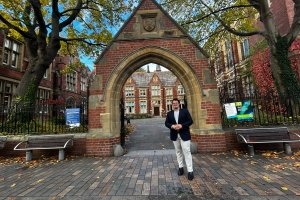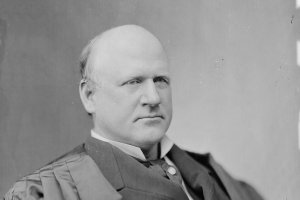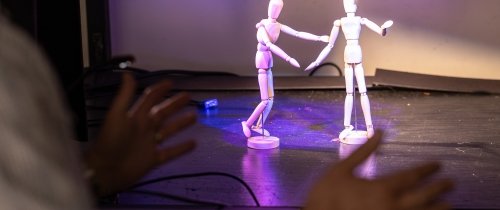
Miniature lighting rig makes a big impact for theatre students
Changing a line or an actor’s delivery is a simple thing.
Test the changes during rehearsals and continue refining until perfect.
Changing a lighting setup is much more complicated.
Don’t like the shade of blue illuminating the sky above? Bring out the ladder and try a different hue. Shadows too harsh? Grab the ladder.
“We used to have things like lighting renderings, which were black construction paper, crayons, and colored pencils,” said Professor of Theatre Matthew Hallock. “You’re trying to communicate to a director ahead of time what it’s going to look like.”
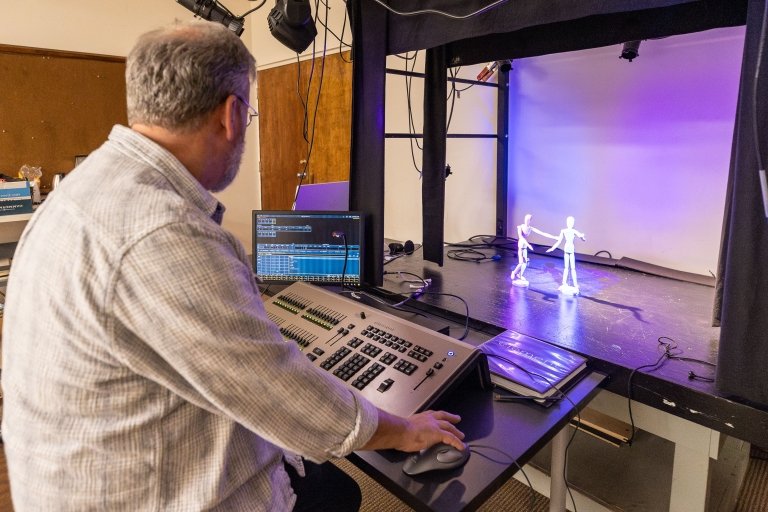
Some unexpected lighting issues can be avoided through sheer expertise—something that only years of practice can bring. But for students learning the ropes, it can be a labor-intensive process.
“One of the reasons it’s such a high-stakes question is that the lighting for a show comes in almost at the very tail end of the process, so there’s very little time to change it if you’re wrong,” Hallock said. “If you as a lighting designer have the wrong idea, sometimes you can’t know until you turn things on.”
That’s where the miniature lighting rig in Hallock’s classroom comes in. He built it after seeing a similar setup constructed by Professor Kenton Yeager at the University of Tennessee. The first version came together some 20 years ago. The current setup (version 2.0, as Hallock calls it) has been in use for the last 15 years, receiving periodic updates.
“When it started, we had some rudimentary small fixtures—almost like novelty lights,” he said. “But over time, lighting equipment manufacturers started developing scaled-down versions of full-size rail lighting fixtures.”
The rig features scaffolding, curtains and an array of miniature theatre lights. An intricate control panel rests on a table nearby.
“You can put scale scenic models in there and light the show,” he said. “You can put costume fabric swatches in there and see how the color in light impacts the costume color differently.”
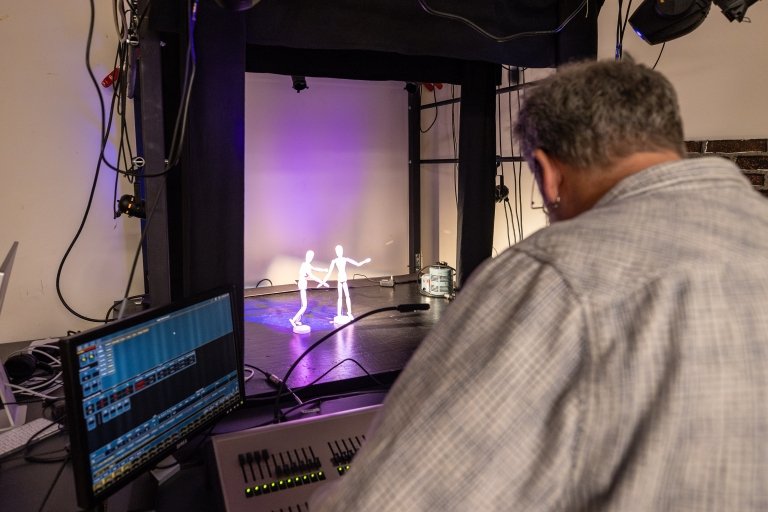
The control panel includes a USB port, allowing for lighting cues to be saved and later imported into the Norton Center for the Arts’ Weisiger Theater or grand Newlin Hall.
Easing the trial-and-error learning process for students has been invaluable since the rig was constructed.
“It’s huge because students are able to manifest their ideas without needing three friends and a ladder,” he said. “The black box theatre used to be the light lab. We’d teach lighting classes in there, and we had a 14-foot, 800-pound ladder that students had to learn to set up, break down, and move around safely. They would haul heavy lights, cables, wrenches, and everything else.
“And here it is, standing on the ground. ’Let’s move it two feet to the left.’ And boom—done.”
This time-saving tool allows students to experiment more, learn faster, and gain experience in a shorter period of time.
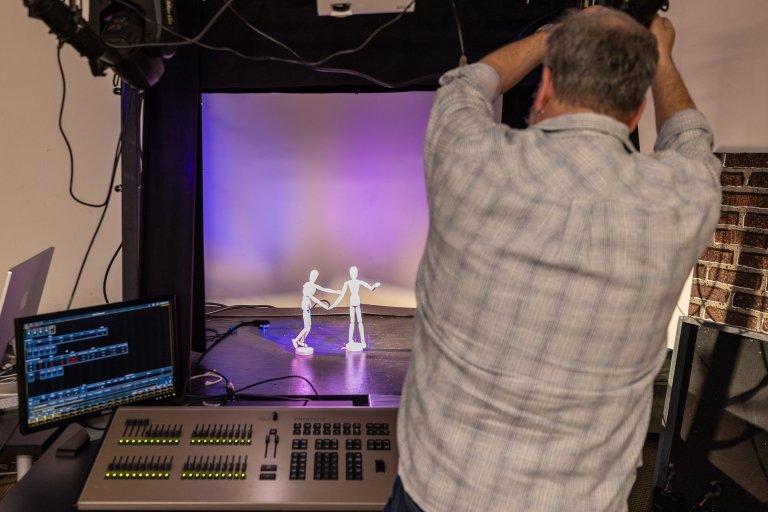
“The gap between having an idea and seeing it realized is so much shorter.”
Hallock built and refined the miniature rig. But as he enters retirement at the end of the year, he’s excited to see how it will be used by future students.
“I will be excited to see what the next person in my job does with it,” he said. “It’s just a great tool, and I think it will continue to be—as long as we have students eager to study light.”

